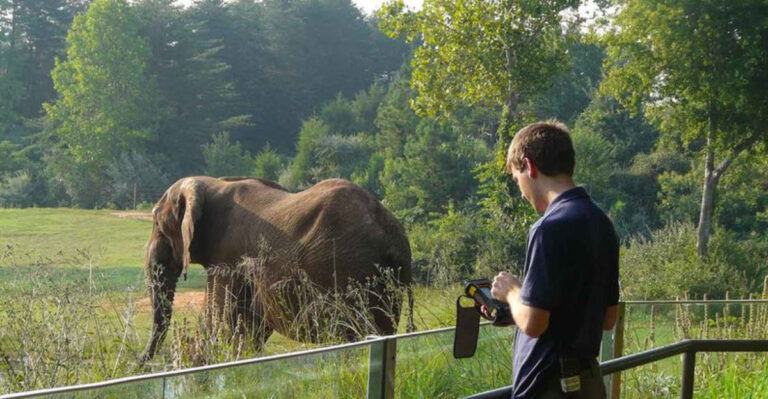11 Clues Your Dog Might Be Unhappy (And 4 Ways They Show They’re Truly Content)
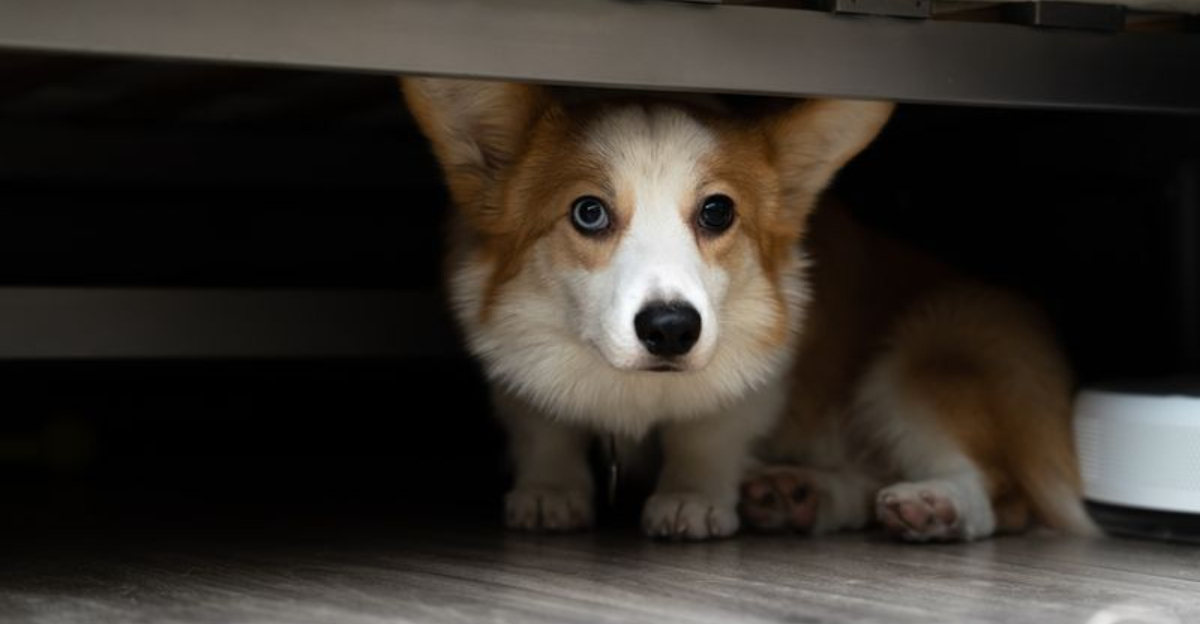
Our furry friends can’t tell us how they feel with words, but they’re constantly communicating through behavior and body language. Understanding these signals helps us keep our dogs happy and address problems before they worsen. Just like humans, dogs experience a range of emotions – and knowing the difference between a content pup and one who’s struggling makes all the difference in your relationship.
1. Excessive Licking Or Chewing

Dogs who constantly lick or chew their paws might be telling you something’s wrong. This self-soothing behavior often signals anxiety, boredom, or physical discomfort that’s making them unhappy.
While occasional grooming is normal, obsessive licking creates wet, red patches called “hot spots” that can become infected. The behavior might start when you’re away and continue even when you’re home.
Pay attention to when the licking happens – is it during thunderstorms? After you leave? This timing provides clues about what’s triggering your dog’s distress and helps you address the underlying cause.
2. Changes In Appetite
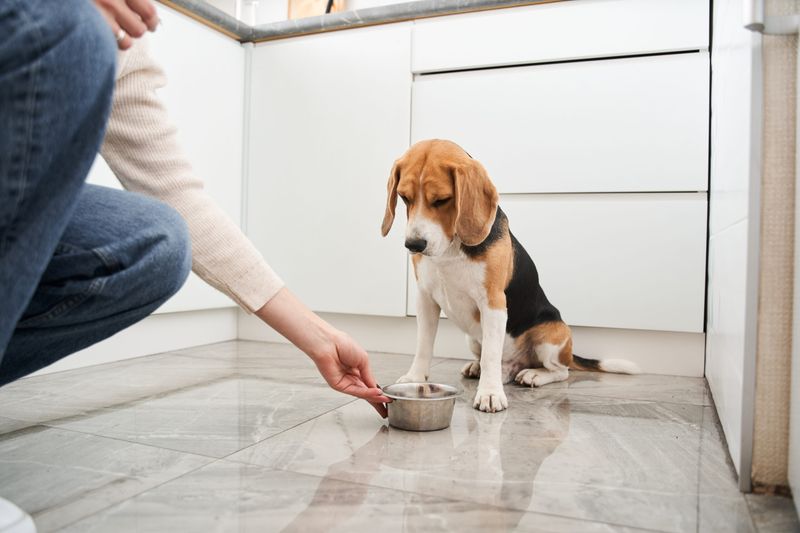
Has your food-loving pup suddenly lost interest in mealtime? Appetite changes often reveal emotional or physical troubles brewing beneath the surface.
A dog who stops eating or suddenly eats much less may be feeling blue. Some unhappy dogs go the opposite direction – eating more than usual as a coping mechanism.
Either way, these shifts from normal patterns deserve attention. Keep in mind that brief appetite changes happen occasionally for harmless reasons.
However, if your dog skips more than two meals or shows dramatic changes in eating habits, it’s time to investigate further.
3. Unusual Hiding Or Isolation

Finding your normally social dog tucked away under furniture or hiding in quiet corners of the house? This behavior screams that something’s off. Happy dogs generally want to be where their people are.
Dogs seek isolation when they’re feeling anxious, ill, or emotionally distressed. Think of it as their version of pulling the covers over their head when upset.
Make note if this behavior appears suddenly or in specific situations – like during thunderstorms or when certain visitors arrive.
These patterns help identify what’s causing your dog’s unhappiness and guide you toward solutions that bring them back to the family circle.
4. Destructive Behavior

Coming home to shredded cushions or chewed-up shoes might make you mad, but your dog isn’t being spiteful. Destruction often signals boredom, anxiety, or excess energy with nowhere to go.
Dogs who don’t get enough mental and physical exercise become frustrated. Tearing things apart releases tension and provides stimulation they’re desperately craving.
Separation anxiety also triggers destructive behavior – notice if the damage happens mainly when you’re gone.
Rather than punishment, these dogs need more exercise, interactive toys, and possibly training to help them feel secure when alone.
5. Excessive Shedding

While all dogs shed naturally, sudden excessive hair loss can signal stress or unhappiness. Stress hormones actually affect hair follicles, causing more fur to fall out than usual – similar to how humans might lose hair during tough times.
You might notice clumps of fur around the house or bald patches developing on your dog. This isn’t just cosmetic – it’s your dog’s body responding to emotional distress. Environmental changes, new family members, or schedule disruptions often trigger stress shedding.
Creating stability and maintaining routines helps reduce anxiety and might just save your vacuum cleaner from overwork!
6. Low Energy Or Lethargy

A normally bouncy dog who suddenly moves like they’re carrying the weight of the world needs your attention. While every dog has lazy days, consistent lethargy signals potential unhappiness or health issues.
Depressed dogs often move slowly, sleep more than usual, and show little enthusiasm for activities they once loved. Their eyes might appear dull, and their overall posture seems deflated.
Environmental changes, loss of a companion (human or animal), or underlying pain can all drain a dog’s spirit. If your pup’s energy doesn’t bounce back after a few days or is accompanied by other symptoms, a vet check becomes essential to rule out medical causes.
7. Excessive Barking Or Whining
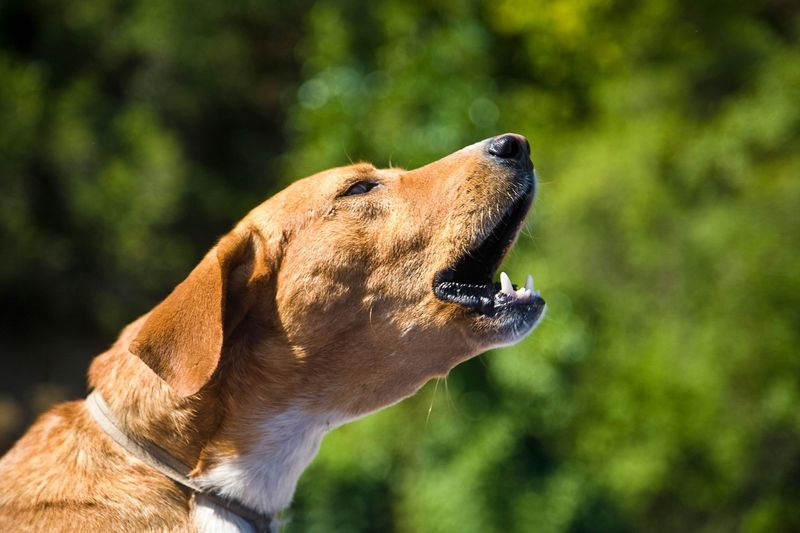
Dogs communicate through vocalizations, but excessive noise often signals distress. Happy dogs bark occasionally – unhappy ones might not stop. This persistent vocalization represents frustration, anxiety, or needs not being met.
Different sounds mean different things. High-pitched whining often indicates stress or physical discomfort, while repetitive barking might signal boredom or a desire for attention.
Rather than scolding, listen to what your dog is trying to tell you. Are they barking at specific times or in particular situations?
These patterns help identify the root cause of their unhappiness and guide you toward effective solutions rather than just treating the noisy symptom.
8. Flattened Ears And Tail
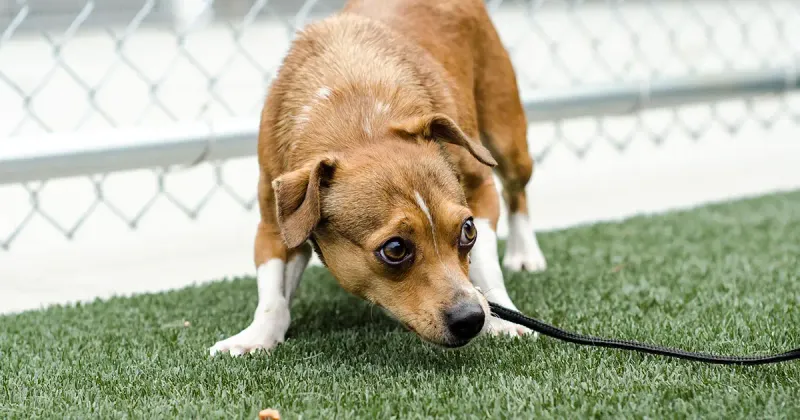
A dog’s body language speaks volumes about their emotional state. Ears pinned back against the head and a tucked tail signal fear, anxiety, or submission – none of which indicate a happy pup.
These physical postures evolved as protective mechanisms. Flattened ears protect vulnerable body parts during stress, while a tucked tail shields scent glands and sensitive areas.
Watch for these signals during specific activities or around certain people. Does your dog’s posture change when the vacuum runs or when strangers approach?
Identifying these triggers helps you create environments where your dog feels secure enough to hold their ears and tail in relaxed, natural positions.
9. Avoiding Eye Contact

A happy dog looks at you with soft, engaging eyes. When your pup consistently avoids eye contact, something’s amiss in your relationship. This avoidance behavior often indicates stress, fear, or past negative experiences.
Dogs use eye contact as a form of bonding with those they trust. Breaking this connection suggests they’re feeling uncomfortable or insecure around you or in their environment.
Building back trust takes patience. Never force eye contact – instead, create positive associations through gentle interactions and rewards.
Gradually, a dog who feels safe will naturally begin to meet your gaze again, rebuilding that special connection that makes the human-canine bond so meaningful.
10. Excessive Sleeping

While dogs naturally sleep 12-14 hours daily, a sudden increase might signal unhappiness. Dogs sometimes use sleep as an escape mechanism when their waking hours aren’t fulfilling or are causing distress.
Depressed dogs often retreat to sleeping spots for hours beyond their normal patterns. They might be difficult to rouse or show reluctance to get up for activities they previously enjoyed.
If your dog seems to be sleeping their life away, consider whether they’re getting enough mental stimulation and physical exercise.
Boredom and depression look remarkably similar in dogs – both can be addressed by enriching their daily experiences with new activities, challenges, and positive social interactions.
11. Aggressive Behavior Changes

A normally gentle dog who suddenly growls, snaps, or shows teeth is telling you something’s wrong. This behavior shift isn’t about being “bad” – it’s a serious communication signal that they’re feeling threatened, in pain, or deeply anxious.
Dogs don’t become aggressive without reason. Common triggers include fear, resource guarding, territorial issues, or physical discomfort they can’t express any other way.
Never punish aggression, as this confirms their fear that something bad happens in certain situations.
Instead, identify what’s triggering the behavior and work with a professional trainer or behaviorist to address the underlying emotional cause rather than just suppressing the warning signs.
12. The Helicopter Tail Wag
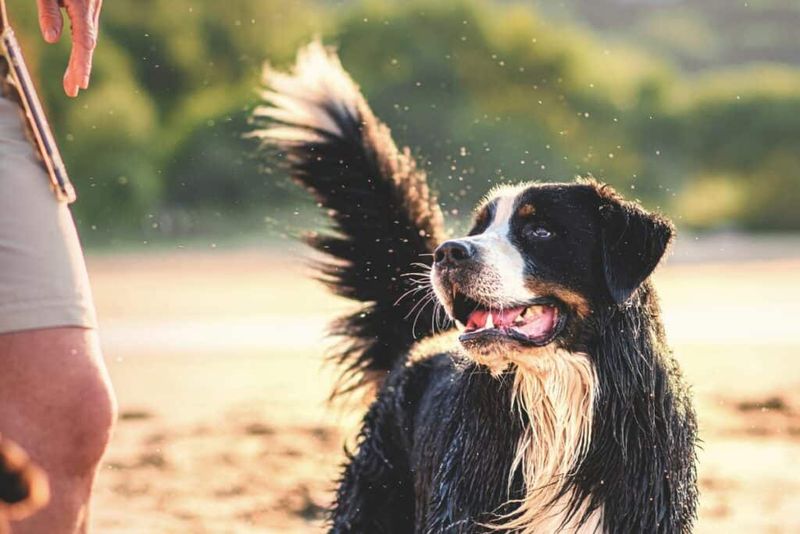
Not all tail wags mean happiness! A full circular “helicopter” wag indicates genuine joy. The tail makes wide, sweeping motions that often involve the dog’s entire rear end wiggling along.
Happy dogs wag their tails at a neutral or slightly elevated position. The movement looks relaxed and natural, not stiff or forced.
You’ll notice this special wag when you come home, during playtime, or when offering treats. It’s paired with relaxed ears, a soft gaze, and an open, slightly panting mouth – the complete picture of canine contentment that shows your dog is truly living their best life with you.
13. Relaxed Facial Expressions
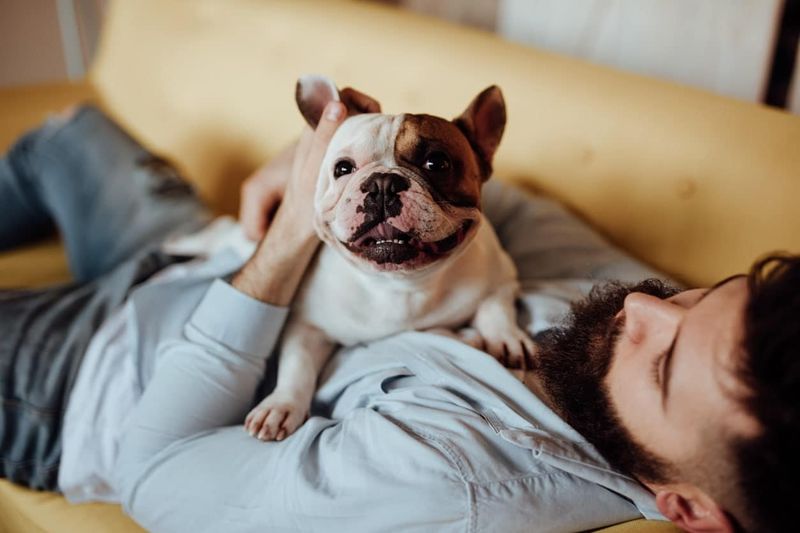
A content dog’s face tells the whole story – soft eyes, relaxed jaw, and normal ear position create the canine version of a smile.
Their mouth might be slightly open with a gentle pant, giving that classic happy dog look we all love. The eyes reveal the most – they’re neither wide with alarm nor squinted with stress.
Instead, they have a soft, sometimes sleepy appearance that shows complete comfort in their surroundings. Even their forehead appears smooth, without the wrinkles or furrowing that indicates worry or concentration.
This relaxed facial state happens when your dog feels safe, comfortable, and at peace – exactly how we want them to feel in our homes.
14. Play Bowing And Invitation To Fun

There’s nothing that screams “I’m happy!” quite like the play bow – front legs extended, rear end up, tail wagging, and eyes bright with excitement.
This universal dog gesture is both an expression of joy and an invitation to join the fun. Happy dogs initiate play regularly, bringing toys or performing this signature bow to engage their humans or other pets.
They bounce back quickly after the activity, ready for more interaction. The play bow shows your dog feels secure enough to be silly and vulnerable.
It indicates they have energy to spare for non-essential activities – a luxury that unhappy or stressed dogs rarely display. When your dog play bows, they’re telling you life is good!
15. Calm Greeting Behavior
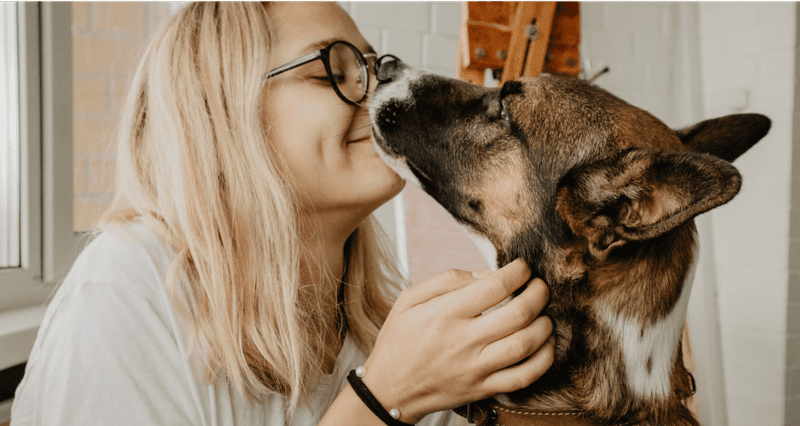
While many dogs get excited when you return home, truly content dogs settle quickly after the initial greeting. They’re happy to see you but not desperately so – showing balanced attachment rather than anxiety.
Secure dogs might wag their tails, bring a toy, or lean against you when you arrive. After this welcome, they return to normal behavior instead of following you obsessively or continuing to jump and bark.
This balanced greeting indicates your dog trusts you’ll return when you leave and feels secure in your relationship.
They enjoy your company without being dependent on your constant presence – a healthy emotional state that suggests your dog is fundamentally content with their life and role in your family.




